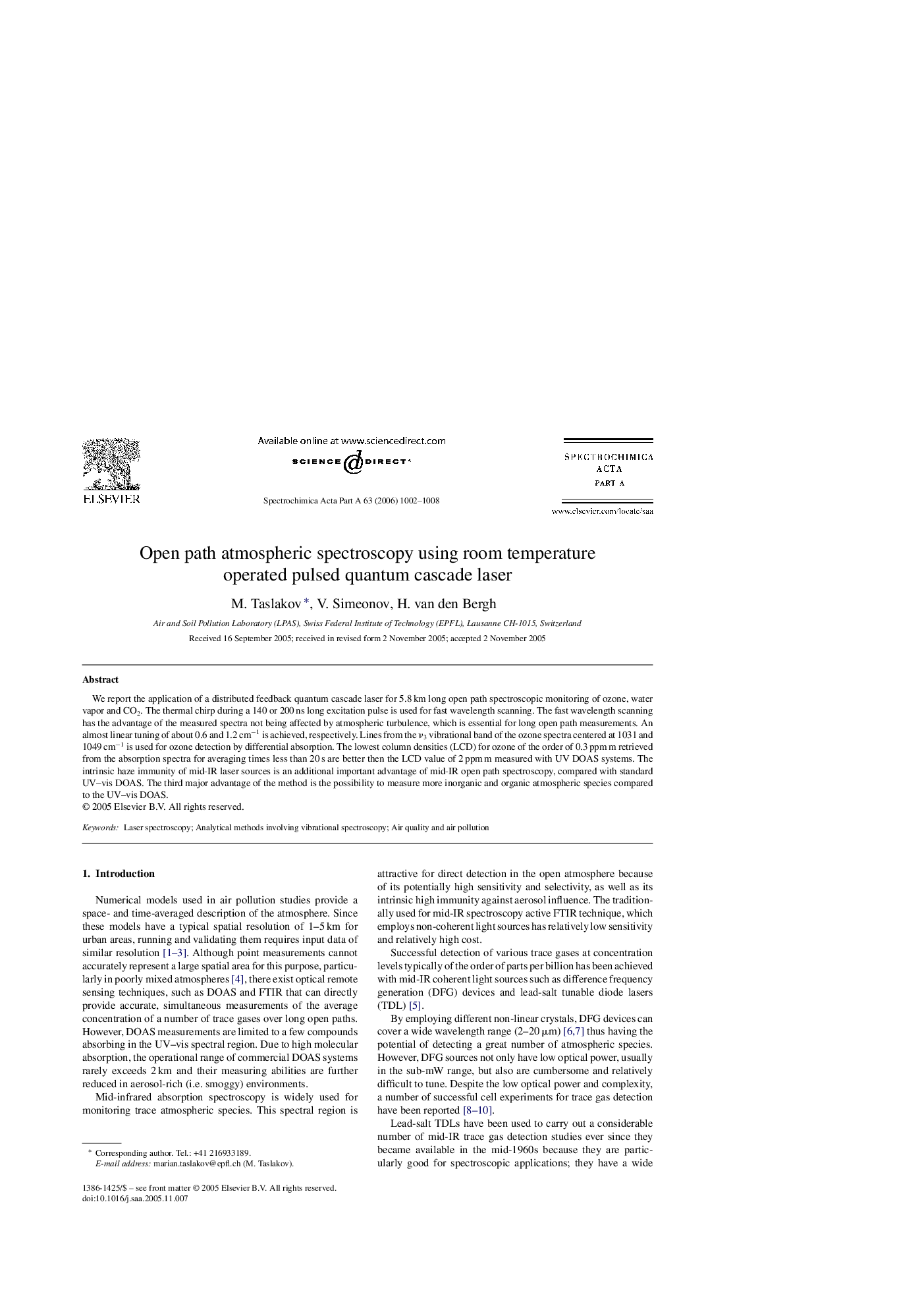| Article ID | Journal | Published Year | Pages | File Type |
|---|---|---|---|---|
| 1238715 | Spectrochimica Acta Part A: Molecular and Biomolecular Spectroscopy | 2006 | 7 Pages |
We report the application of a distributed feedback quantum cascade laser for 5.8 km long open path spectroscopic monitoring of ozone, water vapor and CO2. The thermal chirp during a 140 or 200 ns long excitation pulse is used for fast wavelength scanning. The fast wavelength scanning has the advantage of the measured spectra not being affected by atmospheric turbulence, which is essential for long open path measurements. An almost linear tuning of about 0.6 and 1.2 cm−1 is achieved, respectively. Lines from the ν3 vibrational band of the ozone spectra centered at 1031 and 1049 cm−1 is used for ozone detection by differential absorption. The lowest column densities (LCD) for ozone of the order of 0.3 ppm m retrieved from the absorption spectra for averaging times less than 20 s are better then the LCD value of 2 ppm m measured with UV DOAS systems. The intrinsic haze immunity of mid-IR laser sources is an additional important advantage of mid-IR open path spectroscopy, compared with standard UV–vis DOAS. The third major advantage of the method is the possibility to measure more inorganic and organic atmospheric species compared to the UV–vis DOAS.
